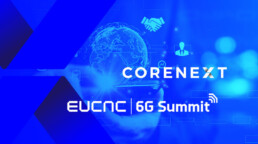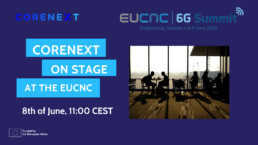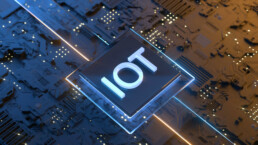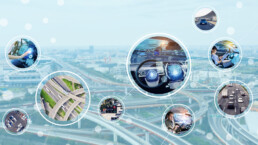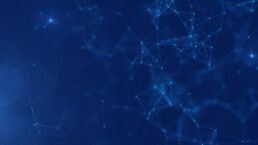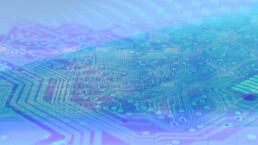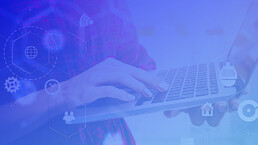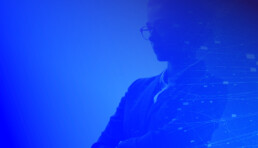Building Trust in the Dynamic XR Industry: Collaboration for End-to-End Trustworthiness
Extended reality (XR) is a catch-all term to refer to augmented reality (AR), virtual reality (VR), and mixed reality (MR). The technology is intended to combine the physical world with the "digital twin world" while being able to interact with it.
The fields of virtual reality and extended reality are rapidly growing and are being applied in a wide range of areas, such as entertainment, marketing, real estate, training, and remote work.
As this immersive technology gains traction, addressing the emerging challenges associated with trustworthiness becomes crucial. With an array of devices from various vendors flooding the market, it is imperative to create awareness among XR stakeholders about the significance of trustworthiness and establish a foundation of reliability and security. This article delves into the importance of trustworthiness in the XR industry, particularly in integrating equipment from different vendors.
Exploring the World of XR
The XR domain, which includes virtual reality (VR), augmented reality (AR), and mixed reality (MR), has experienced remarkable expansion and evolution. Progress in the development of hardware components like headsets, motion trackers, and haptic devices, combined with breakthroughs in software, have propelled XR to the forefront of groundbreaking innovation. These advancements have unlocked a multitude of captivating possibilities across various sectors, ranging from gaming and healthcare to education and industrial training.
The Need for Trustworthiness
As XR becomes increasingly present) across various industries, ensuring trustworthiness becomes essential. Trust is critical for both end-users and stakeholders within the XR ecosystem. On the one hand, for end-users, trust, reliability, security, and overall performance of XR devices translate into the quality immersive experience they seek. For XR stakeholders, trust translates into building long-term relationships with customers, safeguarding sensitive data, and maintaining a competitive edge in the market.
Challenges of Equipment Integration
One challenge that arises as the XR industry expands is the integration of equipment from different vendors. Service providers often rely on diverse devices to deliver comprehensive XR experiences tailored to specific applications. However, integrating devices from multiple vendors can introduce compatibility issues, interoperability concerns, and potential security vulnerabilities.
End-to-End Trustworthiness
Ensuring end-to-end trustworthiness is essential to address the challenges associated with integrating equipment from different vendors. This involves establishing a holistic approach that focuses on the XR ecosystem's reliability, compatibility, security, and privacy aspects.
Reliability: Devices should meet industry standards, undergo rigorous testing, and provide consistent performance to instil confidence in end-users and stakeholders.
Compatibility: Establishing compatibility guidelines and standards that enable seamless integration of devices from different vendors is crucial. This ensures interoperability and reduces potential issues from mixed hardware and software environments.
Security: XR devices must incorporate robust security measures to protect against unauthorized access, data breaches, and other cyber threats. Encryption, authentication protocols, and secure software development practices should be employed throughout the XR ecosystem.
Privacy: With XR technology capturing and processing vast amounts of user data, protecting privacy is paramount. Stakeholders must adopt transparent data handling practices, provide clear consent mechanisms, and stick to relevant data protection regulations.
Collaboration and Standards
Collaboration among XR stakeholders, including device manufacturers, software developers, service providers, and regulatory bodies, is crucial for establishing trustworthiness. Joint efforts should focus on defining and implementing industry standards that enclose device specifications, software interfaces, security protocols, and privacy guidelines. Open dialogue, knowledge sharing, and cooperation among stakeholders will ensure the development of a robust and trustworthy XR ecosystem.
Education and Awareness
Creating awareness among XR stakeholders is vital for building trustworthiness. Training programs, workshops, and industry events should emphasize the importance of trustworthiness and provide practical insights into integrating devices from different vendors. Encouraging responsible development practices, conducting regular security audits, and staying updated with emerging threats is essential when promoting a culture of trust within the XR industry.
As the XR industry grows, integrating devices from different vendors becomes increasingly prevalent. Trustworthiness is key in ensuring a secure and reliable XR experience for end users. By focusing on end-to-end trustworthiness, collaborating on industry standards, and promoting awareness among stakeholders, the XR industry can grow with confidence, safeguarding user interests and capitalizing on the vast potential of this transformative technology. It will be one of the COREnext use cases.
RESOURCES:
What is the Extended Reality (XR): Complete guide 2023
5 Problems And Solutions Of Adopting Extended Reality Technologies Like VR And AR
Secure and Trustworthy Artificial Intelligence-Extended Reality (AI-XR) for Metaverses
The COREnext Project Takes the Spotlight at EuCNC
This year's EuCNC event holds immense significance as it provides a platform to showcase the visions and early technological advancements in the field of 6G. Following the launch of several regional 6G initiatives, it is gratifying to witness Europe's leading position in mobile communications research, thanks to the Smart Networks and Services (SNS) joint undertaking.
Led jointly by industry and the European Commission, the SNS has formulated the strategy and provided the necessary tools to foster technological capabilities for 6G systems. The SNS has recently initiated 35 projects with a combined funding of approximately EUR 250 million from the European Union. Moreover, this year, there is an anticipated call for project proposals with a budget of EUR 132 million. These efforts encompass the establishment of experimental infrastructures, large-scale trials, and pilots across various industries.
The COREnext project took the stage during the session. It showcased how 6G is envisioned to revolutionize the consumer and enterprise markets, surpassing the achievements of 5G. The key focus was earning users' trust and fostering innovative design to facilitate this evolutionary leap. The session presented various enabling technologies from both a network and device standpoint.
Hosted by Ericsson, a special session took place on the 8th of June at 11:00 CEST. Attendees had the opportunity to gain insights into the future of telecommunications and the role of trust in shaping the 6G landscape.
Several compelling presentations were made during the session, shedding light on various aspects of trustworthiness and innovation in telecommunications. Here's a recap of the topics covered by each speaker:
From Ericsson (SE), Fredrik Tillman started the session by providing an insightful introduction. He set the stage for the subsequent presentations, emphasizing the importance of trust and security technologies in the evolving telecom landscape.
Patrik Ekdahl, also from Ericsson (SE), delved into the telecommunications industry's challenges in implementing secure enclaves. He discussed the significance of protecting sensitive data and ensuring the privacy and integrity of telecommunication networks.
Gerhard Fettweis from Technische Universität Dresden (DE) presented the COREnext project, focusing on the design aspects that enhance trustworthiness. This project aimed to develop innovative solutions and frameworks to establish trust in the rapidly advancing telecom ecosystem.
Anastasia Grebenyuk, another Ericsson (SE) speaker, delved into radio fingerprinting. She highlighted how machine learning algorithms could be leveraged to identify and authenticate radio signals, contributing to telecommunications networks' overall trustworthiness and security.
Panagiotis Demestichas, from WINGS (GR), provided insights into the intersection of trustworthiness and IoT devices. He discussed the challenges and opportunities in ensuring the security and reliability of IoT devices, which play a crucial role in the evolving telecom landscape.
Mario Scillia (BE), from the European Commission, delivered the concluding remarks, summarizing the key takeaways from the session. He highlighted the importance of trust in driving innovation and progress in the telecommunications industry and acknowledged the significant efforts made by the presenters and participants.
The session provided a comprehensive overview of the challenges and advancements in establishing trust in the telecom sector. The presentations provided valuable insights for the attendees, contributing to the overall knowledge exchange and collaboration within the community.
https://youtu.be/LMa0lWwSSFk
Learn more about the project and the chair at the Ericsson session during the EuCNC.
https://youtu.be/scmtEON2f1w
COREnext at the EuCNC
The European Conference on Networks and Communications (EuCNC) and the 6G Summit is set to host a special session on 6G Security and Trust, where the recently launched COREnext project will be on stage. 6G is envisaged to impact the consumer and enterprise markets beyond what is accomplished by 5G today. For this evolution to happen, trust must be earned among users and supported by innovative design. This session will present examples of enabling technologies from a network and device perspective.
The special session, hosted by Ericsson will take place on the 8th of June, at 11:00 CEST.
Programme
- Introduction (5’):
- Fredrik Tillman (Ericsson, SE)
- Secure enclave challenges for telco (15’+5’ Q&A)
- Patrik Ekdahl (Ericsson, SE)
- The COREnext project- enhanced trustworthiness by design (15’+3’ Q&A)
- Gerhard Fettweis (TU Dresden, DE)
- Radio fingerprint using ML algorithms (15’+5’ Q&A)
- Anastasia Grebenyuk (Ericsson, SE)
- Trustworthiness and IoT devices (15’+5’ Q&A)
- Panagiotis Demestichas (WINGS, GR)
- Concluding remarks by the commission (5’)
- Mario Scilia (EC, BE)
For more information: Special Session 11 - EuCNC
Securing IoT Systems: Gathering Data from Vertical Sectors
IoT and Verticals
IoT is key within the CORenext project, but how can we define it? IoT stands for "Internet of Things," which refers to a network of physical objects embedded with sensors, software, and connectivity to exchange data over the Internet. In simpler terms, connecting everyday objects to the internet to communicate with other devices and people.
COREnext also takes care of the implications of the IoT in the Vertical sectors. Verticals refer to specific industries or business areas with unique needs, requirements, and regulations. For example, healthcare, finance, and transportation are all vertical sectors. Each sector has its own challenges, opportunities, and trends that influence the adoption and implementation of IoT solutions. Therefore, IoT solutions and technologies may vary depending on each vertical sector's needs and requirements.
The Need for Security in IoT Data Acquisition
IoT is transforming verticals by interconnecting devices and using data to drive technological advancements. The IoT ecosystem comprises many interconnected devices, networks, and platforms communicating and sharing data in real-time. This interconnectedness also introduces vulnerabilities, making IoT systems susceptible to e.g., security breaches, data breaches, and other cyber threats. As data is collected from diverse vertical sectors, the risk of potential attacks and unauthorized access increases. This is especially critical when dealing with sensitive data related to manufacturing processes, production operations, environmental monitoring, and utility management, which are crucial for the smooth functioning of these verticals; as data acquisition from various sectors becomes more widespread, the more it is crucial to prioritize the security of IoT systems.
Strong security measures must be implemented to achieve this, including end-to-end encryption during data transmission, authentication and authorization mechanisms, security audits to identify vulnerabilities, real-time monitoring and logging, timely software and firmware updates, and education and training programs for stakeholders on IoT security best practices. By implementing these measures, we can enhance the security of IoT systems and better protect against potential cyber threats.
Securing IoT Systems in Vertical Sectors
To ensure security and trustworthiness in IoT systems, adopting robust measures for data acquisition from vertical sectors is essential. Here are some key considerations for securing IoT systems in verticals:
- Implementing End-to-End Encryption: Data transmitted between IoT devices, networks, and platforms should be encrypted to protect it from unauthorized access. End-to-end encryption ensures that data remains secure throughout the transmission process, preventing interception and tampering.
- Authentication and Authorization: Implementing strong authentication and authorization mechanisms ensures that only authorized devices and users can access and manipulate IoT data. This includes using secure authentication protocols, such as two-factor authentication, and setting up proper access controls and permissions.
- Regular Security Audits: Regular security audits and vulnerability assessments help identify and address potential weaknesses in IoT systems. This includes evaluating the security of sensors, actuators, smart meters, and other devices used in vertical sectors and patching vulnerabilities to prevent potential attacks.
- Monitoring and Logging: Implementing robust monitoring and logging mechanisms helps detect and mitigate security breaches in real time. This includes setting up security information and event management (SIEM) systems, intrusion detection systems (IDS), and security analytics tools to monitor IoT systems for suspicious activities continuously.
- Regular Software Updates: Keeping all IoT devices, platforms, and software up-to-date with the latest security patches and updates is crucial for mitigating known vulnerabilities. This includes regularly updating firmware, software, and security configurations on all IoT devices in vertical sectors.
- Training and Awareness: Educating employees and stakeholders about IoT security best practices and raising awareness about potential security risks is vital. This includes training on the safe usage of IoT devices, promoting cybersecurity hygiene, and fostering a security-conscious culture within the organization.
With the increased need for data sharing among multiple domains, devices, verticals and organizations, it is critical to ensure that different components and nodes are trustworthy end-to-end to ensure effective transmission of trustworthy data. By prioritizing security in IoT data acquisition, we can leverage the full potential of data from vertical sectors while mitigating risks and ensuring data integrity and confidentiality.
Sources:
What Are the Key Requirements of IoT Security?
IoT Security Guidelines Overview Document
The challenges of IoT security
THE MOST BENEFICIAL IOT APPLICATIONS: INDUSTRY VERTICALS AND HORIZONTAL ENABLERS
IoT industry and vertical markets
What is the IoT? Everything you need to know about the Internet of Things right now
Ensuring Trustworthiness: The Crucial Role of Privacy in Automotive Infrastructure
As technology continues to evolve, the automotive industry has seen a significant increase in connected vehicles on the road. These vehicles have sensors, memory technologies, wireless communication and other technologies that collect data and communicate with other vehicles and infrastructure components. While these advancements can improve safety, reduce traffic congestion, and increase fuel efficiency, they raise concerns about privacy and security. In this article, we will explore the topic of trustworthiness in automotive infrastructure and its impact on user privacy.
What is Trustworthiness in Automotive Infrastructure?
Trustworthiness in automotive infrastructure refers to the ability of connected vehicles and their components to maintain the privacy and security of the data they collect and use. This includes protecting against unauthorized access, hacking, and other cyber threats. It also includes protecting user privacy by limiting personal information collection and sharing.
Privacy Concerns in Automotive Infrastructure
One of the main privacy concerns in automotive infrastructure is collecting and sharing personal information. This includes information such as a vehicle's location, speed, and driving habits, which can be used to create a detailed profile of a driver's behaviour. This information can be used for targeted advertising, tracking, and surveillance. It can also be sold to third-party companies for various purposes.
Another concern is the potential for cyberattacks. Connected vehicles and infrastructure components are vulnerable to hacking and other cyber threats, which can result in the theft of personal information or the manipulation of vehicle systems. This can lead to serious safety risks and financial and reputational damage.
Ensuring Trustworthiness in Automotive Infrastructure
Several steps need to be taken to ensure trustworthiness in automotive infrastructure. One of the most important is strong encryption and authentication protocols. This can help protect against unauthorized access and ensure that only authorized parties can access sensitive data.
Another important step is the use of privacy-preserving technologies. These technologies can limit the collection and sharing of personal information while still allowing for collecting useful data for traffic management and other purposes.
Finally, it is important to have robust governance and accountability mechanisms in place. This includes clear policies and procedures for the data collection, sharing, and use and the ability to audit and monitor compliance with these policies. It also includes effective enforcement mechanisms, such as fines and penalties for non-compliance.
Trustworthiness in automotive infrastructure is essential to ensure the privacy and security of connected vehicles and their components. While advancements in technology have the potential to improve safety, reduce traffic congestion, and increase fuel efficiency, it is important to consider the privacy and security implications of these advancements. By using strong encryption and authentication protocols, privacy-preserving technologies, protection mechanisms, and complying governance and accountability mechanisms, we can ensure that connected vehicles and infrastructure components are trustworthy and protect user privacy.
Sources:
A privacy-preserving scheme for vehicle-to-everything communications using 5G mobile edge computing
Trustworthiness: A New Name Within Automotive
Control of connected and automated vehicles: State of the art and future challenges
On trust management in vehicular ad hoc networks: A comprehensive review
#CORENEXTWOMENSDAY – An interview with Laura Wetsch
International Women's Day (IWD) is a global holiday celebrated annually on March 8 as a focal point in the women's rights movement, bringing attention to issues such as gender equality, reproductive rights, and violence and abuse against women. This year, International Women’s Day is “DigitALL: Innovation and technology for gender equality”.
In COREnext, we are so happy to work with amazing women on the project.
Today we are pleased to introduce you to Laura Wetsch, project manager at Vodafone Chair Mobile Communications Systems at Technische Universität Dresden.

|
INTERVIEW
- What is your mission within the COREnext project?
I am currently participating in various 6G projects, including COREnext, as part of my role at the Vodafone Chair Mobile Communications Systems. These projects involve collaboration with multiple industrial partners and universities who are researching various aspects related to 6G. Establishing and maintaining communication and collaboration with these projects is crucial, as it helps us differentiate the goals of COREnext and developments from related projects. At the same time, we need to recognize areas of overlap and work towards a common strategy in this interdisciplinary and rapidly-evolving field. This collaborative approach is essential for success in the 6G space. By aligning the objectives of 6G, we can develop a technology and a common understanding that meet the needs of various stakeholders and supports the future growth of the digital economy.
- What are the most significant challenges you addressed/faced in your career?
Women in engineering face several challenges that can impact their career growth and success. During my studies and in the early stages of my career, I experienced different types of gender bias and stereotypes. This can make it difficult to be taken seriously, acquire a reputation and advance in one’s career. But next to gender bias and stereotypes, sometimes I experienced a lack of female role models and mentors to share opinions, navigate in the field and gain advice. This may lead to the perception of being isolated and sometimes even disconnected. Fortunately, I have had and still have great male mentors and colleagues around me who are always willing to help, offer advice, and share their knowledge. This is a big advantage, and it leads to better teamwork and understanding when we work together on research projects, as well as a better working environment overall.Overall, the challenges women face can make it difficult in the field of engineering, especially with respect to advancing their careers, achieving their goals, and contributing fully to the field. Addressing these challenges requires a joint effort by the industry, educational institutions, and society to eliminate gender bias, promote diversity and inclusivity, and create a supportive and welcoming environment for women in engineering.
- This year, the International Women’s Day theme is “DigitALL: Innovation and technology for gender equality”. Unfortunately, the opportunities of the digital revolution also present a risk of perpetuating existing patterns of gender inequality. What do you think about that?The digital revolution has the potential to both perpetuate and mitigate gender inequality. On the one hand, digital technologies can reinforce existing gender biases and inequalities by replicating traditional gender roles and stereotypes. For example, women may be underrepresented in the technology sector, both as users and creators of technology. Additionally, digital platforms and algorithms may perpetuate gender-based discrimination, such as biased hiring or loan decisions.On the other hand, digital technologies can also provide new opportunities for women to challenge traditional gender norms and increase their participation in previously male-dominated fields. For example, online education and remote work can provide women with more flexible options for pursuing careers while balancing other responsibilities.Ultimately, the extent to which the digital revolution perpetuates or mitigates gender inequality depends on how these technologies are designed, implemented, and used. It is important for developers, policymakers, and users alike to be aware of the potential for bias and discrimination and to take steps to ensure that digital technologies promote gender equality and diversity.
- Even though we see more women pursuing careers in life sciences, we still have a long way to go, based on UNESCO statistics. How can we increase the number of women in science, technology, engineering and mathematics (STEM) disciplines?Schools and universities can create a more inclusive learning environment by promoting diversity and inclusivity in their STEM programs. This can involve developing a curriculum that includes diverse perspectives and histories, promoting inclusive teaching practices, and creating a supportive and welcoming environment for all students.But also, from an early stage on, providing young girls with opportunities to engage in STEM activities and providing them the chance to get in touch with female role models in STEM can help to inspire and encourage them to pursue STEM education and careers. Increasing the number of women in STEM requires a concerted effort from educators, employers, and society to promote diversity, inclusivity, and gender equality in STEM fields.
- What inspires you in your work?
Several aspects inspire me about the work I do. On the one hand, I appreciate the opportunity to meet and collaborate with experienced and dedicated researchers, industry partners, and politicians. Understanding the different perspectives and objectives of these stakeholders helps me develop a more comprehensive understanding of the issues at hand and align my work with the needs of the environment and industrial and social needs. This helps develop and establish new ideas and technologies that meet the various stakeholders' requirements and support the digital economy's future growth. On the other hand, I am inspired by work conducted in a supportive and collaborative environment. Especially jobs that offer a positive and inclusive workplace culture, opportunities for mentorship and networking, and a work-life balance that allows achieving personal and professional goals are great motivation.
#CORENEXTWOMENSDAY – An interview with Sabine Oeste
International Women's Day (IWD) is a global holiday celebrated annually on March 8 as a focal point in the women's rights movement, bringing attention to issues such as gender equality, reproductive rights, and violence and abuse against women. This year, International Women’s Day is “DigitALL: Innovation and technology for gender equality”.
In COREnext, we are so happy to work with amazing women on the project.
Today we are pleased to introduce you to Sabine Oeste, who works at the Barkhausen Institut for COREnext as a Project Manager.

Copyright of the picture © Andreas Scheunert |
INTERVIEW
- WHAT IS YOUR MISSION WITHIN THE CORENEXT PROJECT?</strong >
As a Project Manager, I’m responsible so everyone in the project can collaborate excellently. This also addresses topics of gender equality. Diverse teams are the most productive ones, especially when facing complex tasks. We still need more women in engineering to become more excellent results.
- THIS YEAR, THE INTERNATIONAL WOMEN’S DAY THEME IS “DIGITALL: INNOVATION AND TECHNOLOGY FOR GENDER EQUALITY”. UNFORTUNATELY, THE OPPORTUNITIES OF THE DIGITAL REVOLUTION ALSO PRESENT A RISK OF PERPETUATING EXISTING PATTERNS OF GENDER INEQUALITY. WHAT DO YOU THINK ABOUT THAT?</strong >
It must prevent that there are digital solutions from resulting in gender inequality. It is important to address these topics in designing and developing new technologies.
- EVEN THOUGH WE SEE MORE WOMEN PURSUING CAREERS IN LIFE SCIENCES, WE STILL HAVE A LONG WAY TO GO, BASED ON UNESCO STATISTICS. HOW CAN WE INCREASE THE NUMBER OF WOMEN IN SCIENCE, TECHNOLOGY, ENGINEERING AND MATHEMATICS (STEM) DISCIPLINES?
We still need more women in education in STEM disciplines. It is important to support girls and young women in their career choice and encourage them to select a job in this area. Companies can offer special events to reach girls and women. You can support women already working in this field by providing challenging job opportunities and establishing a family-friendly work culture (e.g., flexible working hours and meeting schedules).
- WHAT INSPIRES YOU IN YOUR WORK?
I like the work in interdisciplinary and diverse teams with challenging tasks.
#CORENEXTWOMENINSCIENCE – An interview with Jian Yiyun
Our Women in Science campaign comes to its third issue with the interview with Jian Yiyun. This year International Women’s Day has the theme “DigitALL: Innovation and technology for gender equality”, and we want to celebrate it and make visible the work the women in the team are doing.
 |
After graduating from the Beijing Institute of Technology (BIT), China, in 2013, Yiyun Jian majored in instrumentation engineering, Master’s degree. She then worked as a digital hardware engineer at the Institute of Geology and Geophysics, Chinese Academy of Sciences.
Since August 2022, working at IHP in Germany as a Ph.D. student, focusing on MAC layer design of the 6G project and digital hardware implementation (FPGA based) of the 6G project. |
Interview
- WHAT IS YOUR MISSION WITHIN THE COREnext PROJECT?
My main task is to contribute to the functionality of digital components of trustworthy communication in the COREnext project.
- WHAT ARE THE MOST SIGNIFICANT CHALLENGES YOU ADDRESSED/FACED IN YOUR CAREER?
My most significant challenges are innovating advanced technologies to achieve high reliability and resilience, precise and low-latency communication and sensing.
- THIS YEAR, INTERNATIONAL WOMEN'S DAY HAS THE THEME "DIGITALL: INNOVATION AND TECHNOLOGY FOR GENDER EQUALITY", AND THE INTERNATIONAL DAY OF WOMEN AND GIRLS IN SCIENCE FOCUSED ON "DEVELOPMENT GOAL". WHAT DO YOU THINK IS THE ROLE OF SCIENCE IN SUSTAINABLE DEVELOPMENT?
Science is significant in sustainable development; we can predict, prevent and protect using the technologies.
- EVEN THOUGH WE SEE MORE WOMEN PURSUING CAREERS IN LIFE SCIENCES, WE STILL HAVE A LONG WAY TO GO, BASED ON UNESCO STATISTICS. HOW CAN WE INCREASE THE NUMBER OF WOMEN IN SCIENCE, TECHNOLOGY, ENGINEERING AND MATHEMATICS (STEM) DISCIPLINES?
To provide more opportunities and awards for women and families and parenting support.
- WHAT INSPIRES YOU IN YOUR WORK?
The achievements genuinely contribute to the new technologies that may help humanity and all lives.
#CORENEXTWOMENINSCIENCE - An interview with Anastasia Grebenyuk
On 11 February, we celebrated the International Day of Women and Girls in Science. The Day focuses on the fact that science and gender equality are vital for achieving internationally agreed development goals, including the 2030 Agenda for Sustainable Development. Regarding the upcoming International Women's Day on the 8th of March, the theme this year will be “DigitALL: Innovation and technology for gender equality”, so we will continue giving visibility to the women in the team.
 |
Dr. Grebenyuk Anastasia, is 38 years, and has a PhD in Experimental particle physics. Before Ericsson I works at the Large Hadron Collider (LHC) at CERN. She is the mother of two kids. |
Interview
- What is your mission within the COREnext project?
Develop a machine learning algorithm for radio fingerprinting. - What are the most significant challenges you addressed/faced in your career?
To perform intelligent tasks which require out-of-box thinking and deep knowledge in the relevant field, being engaged in multiple projects. - International Day of Women and Girls in Science focused on development goals this year. And International Women's Day is focused on technology. What do you think is the role of science in sustainable development?
Scientists are increasingly expanding their knowledge in areas such as climate change, increasing resource consumption, demographic trends and environmental degradation. Developments in these and other areas must be considered when designing long-term development strategies. Science must continue to play an increasingly important role in promoting the efficient use of resources and finding new methods, means and alternatives for development. - Even though we see more women pursuing careers in life sciences, we still have a long way to go, based on UNESCO statistics. How can we increase the number of women in science, technology, engineering and mathematics (STEM) disciplines?
As parents, we should make kids interested in science/technology/physics/math in their earlier childhood, independent of gender. Unfortunately, in some countries, society puts its frames on the choice of education and profession among women. We should dispel prejudices and ensure that the choice of education comes from our interests and not from society's stereotypes. - What inspires you in your work?
Challenging tasks, curiosity for knowledge, smart people
#CORENEXTWOMENINSCIENCE - An interview with Parisa Aghdam
On 11 February, we celebrate the International Day of Women and Girls in Science. The Day focuses on the fact that gender equality in science (and in general) is vital for achieving internationally agreed development goals, including the 2030 Agenda for Sustainable Development.
Within COREnext, scientific researchers(women and men) are working together to bring the project to an outstanding level.
You can meet some scientific women involved in the project at the #COREnextWomenInScience campaign.
Today the campaign is in its first issue, and we published the interview with researcher Parisa Aghdam.
 |
Parisa Aghdam holds the research leader role and leads the Electromagnetics team at Ericsson Research, Gothenburg, Sweden. During the last 6 years of working at Ericsson, she has mainly been driving 5G PoCs/pre-dev activities and the analogue front-end team in millimeter wave (mmW) 6G testbed. Her research interests are microwave and mmW hardware solutions and technology components for 5G/6G applications. |
- What is your mission within the COREnext project?
Our Ericsson research team (Gothenburg) will mainly study analogue techniques and components (work package 5) for ultra-high-speed data links at short distances. The outcome of this research could be used, for instance, in disaggregated 6G radio base stations. - What are the most significant challenges you addressed/faced in your career?
For me, the toughest has been when I experienced periods of career stagnation, as I'm sure many of us have, due to a lack of challenge in my work. Now, I am grateful to be employed in an environment that values a supportive and inclusive culture, which has aided me in overcoming such struggling times. - This year, the International Day of Women and Girls in Science focuses on ‘development goals’. What do you think is the role of science in sustainable development?
Of course, scientists and researchers play a crucial role as they shape the future of industries through their forward-thinking and visionary work. Sustainable development goals should be integrated into fabrics of research initiatives. - Even though we see more women pursuing careers in life sciences, we still have a long way to go, based on UNESCO statistics. How can we increase the number of women in science, technology, engineering and mathematics (STEM) disciplines?
I recommend starting education about science and technology at a young age to instil curiosity and interest. This requires a joint effort from parents, schools, and industries. Additionally, I believe there is a lack of female representation in STEM fields, particularly in social media, where role models have a significant influence. - What inspires you in your work?
The numerous factors contributing to my motivation at Ericsson include esteemed colleagues, challenging research projects, and the potential for my work to have a positive impact on people's lives by providing seamless, secure, and trustworthy connectivity in the 6G era.


